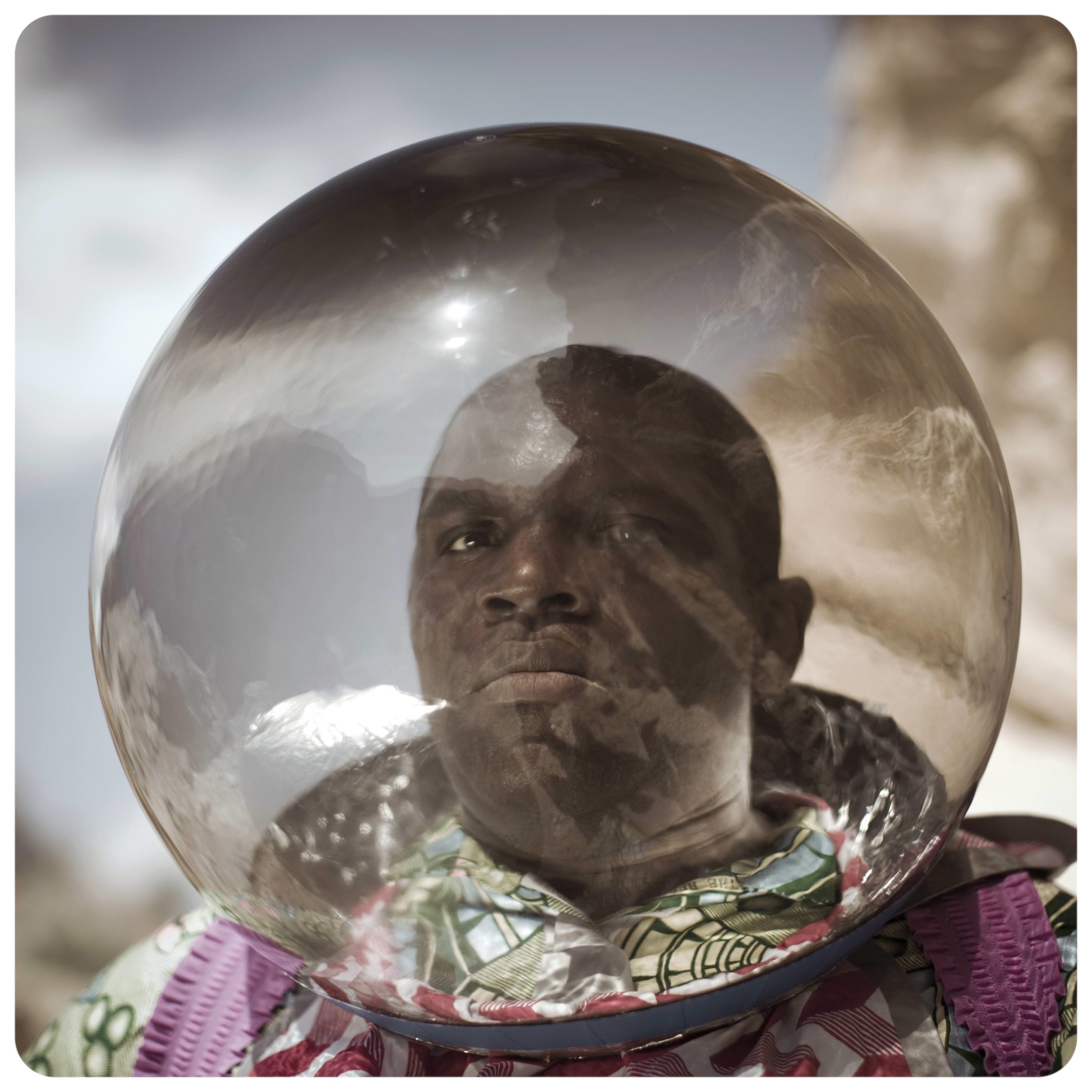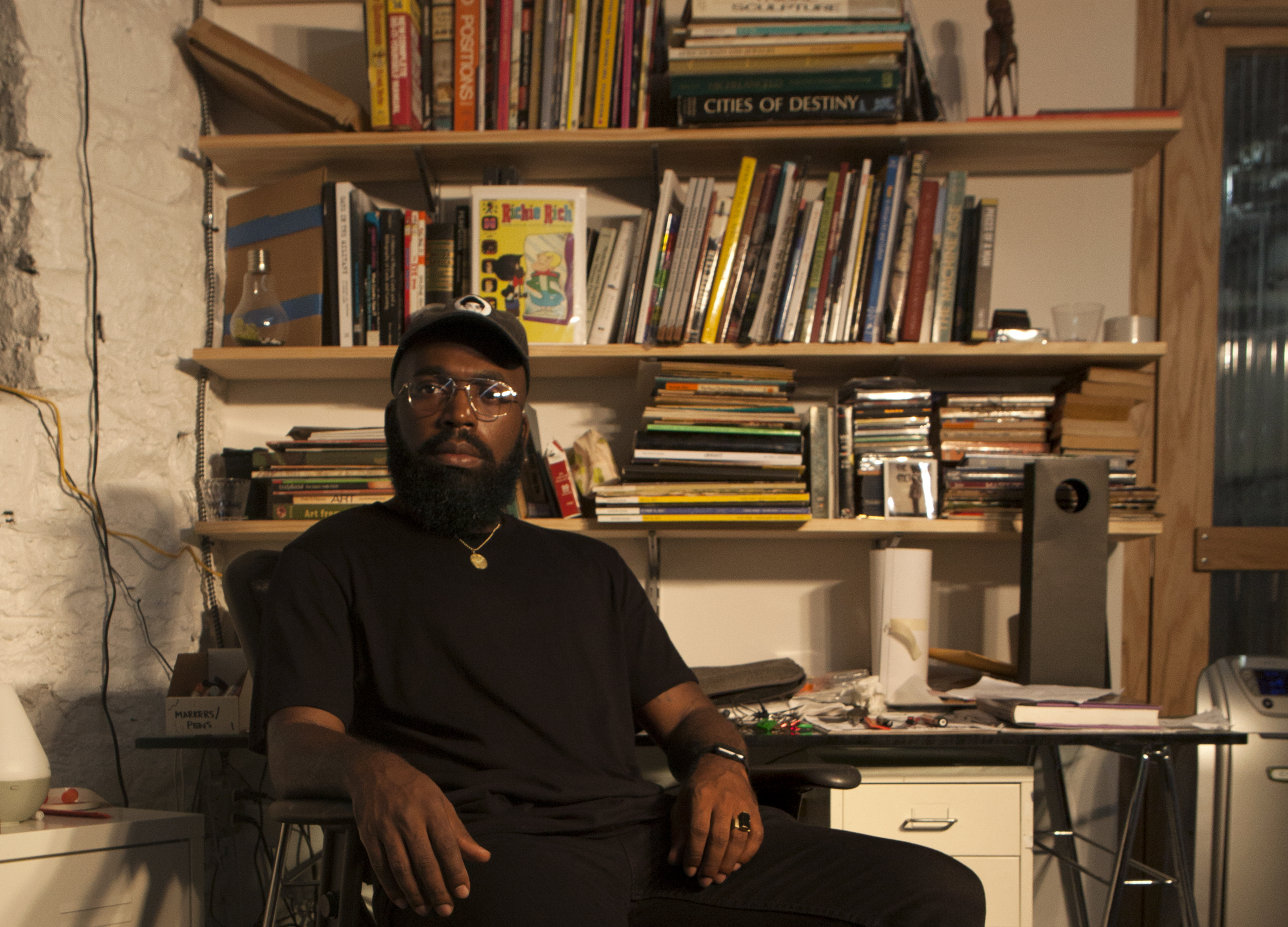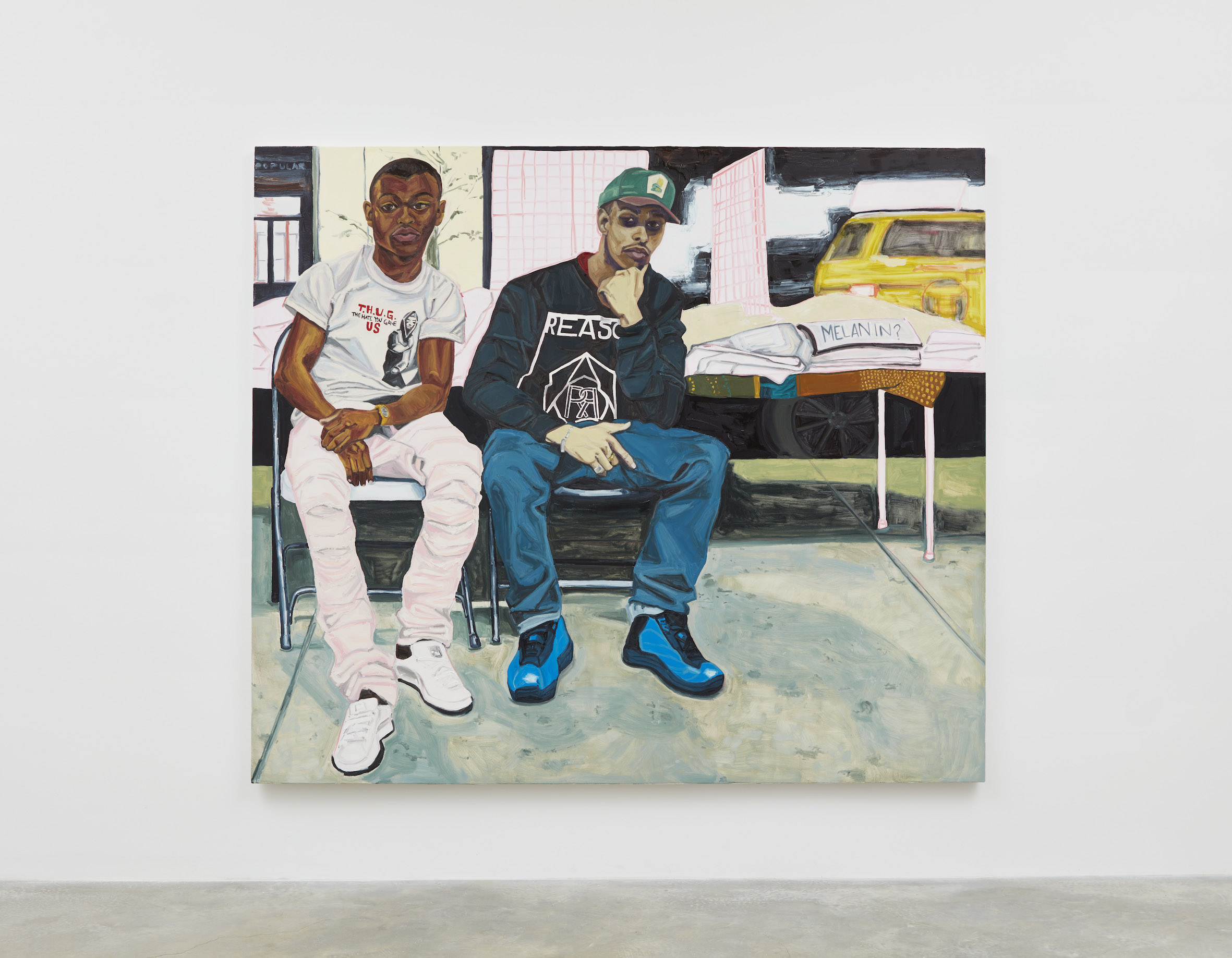Cullen Washington Jr. is an artist who uses repurposed materials like cardboard, dust, headphone cushions, tape or string. He has previously exhibited at the likes of The Studio Museum in Harlem, The Contemporary Arts Museum in Houston, Saatchi Gallery in London, and the Chicago Museum of Science and Industry.
We recently asked the artist about his latest body of work, “Space Notations,” currently on view at B²OA in New York through February 21.
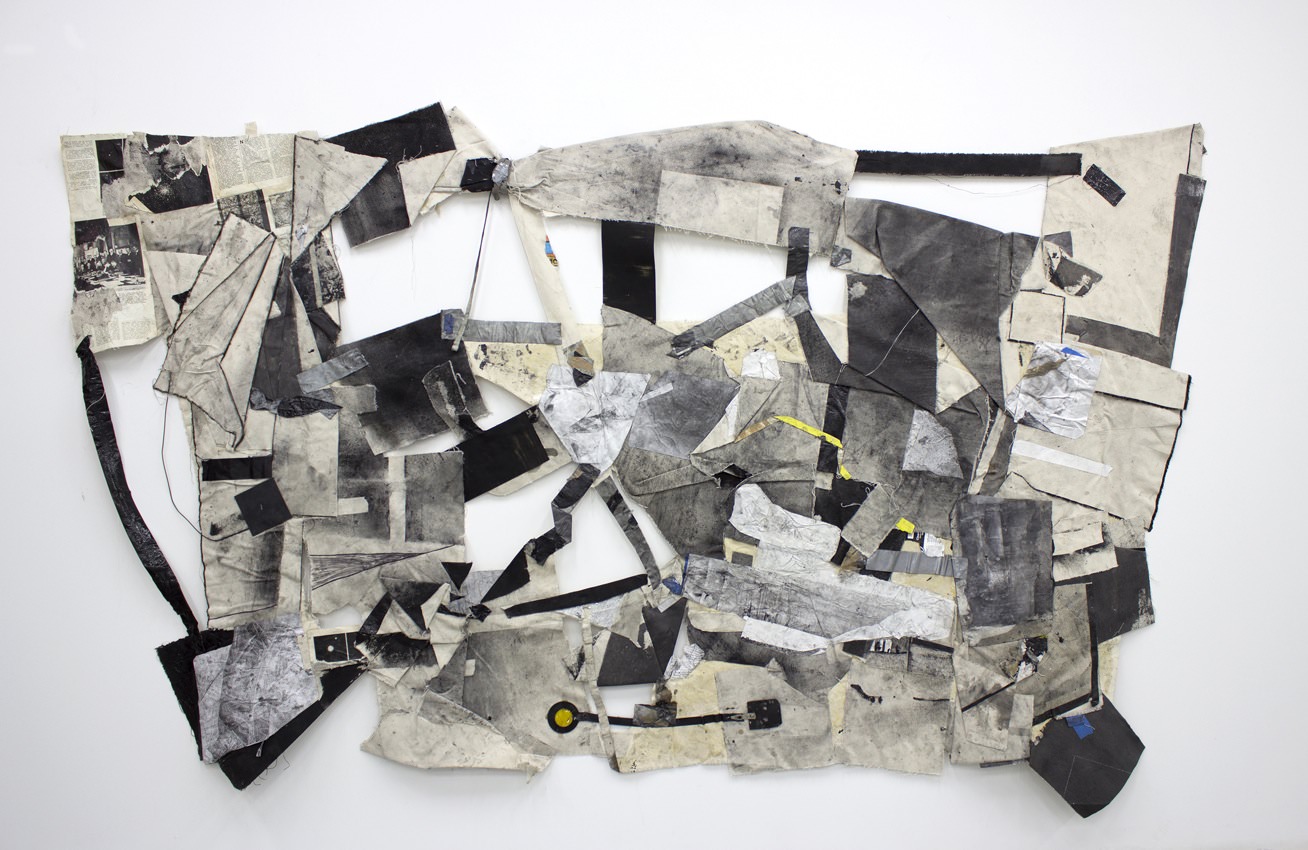
108 x 72 inches
WHITEWALL: Let’s start with the current show “Space Notations.” Was there a starting point for this work?
CULLEN WASHINGTON JR.: I see my work as a continual conversation. It has neither a start nor a finish. Each body of work reflects a current interest, influence or a reflection from previous works. For “Space Notation,” I was influenced by Salvatore Scarpitta and his seemingly bandage wrapped canvases. My interest lay in the idea of the void or the absence of matter. In reflection to previous works, I wanted to expose more of the grid as a symbolic structure in art history and as well as the framework that undergirds all things. In previous bodies of work, I used the figure, symbolism and esoterics to convey ideas. Over time, I felt these were limited in their abilities to convey what I was truly trying to say. Abstraction became my mode of operandi.
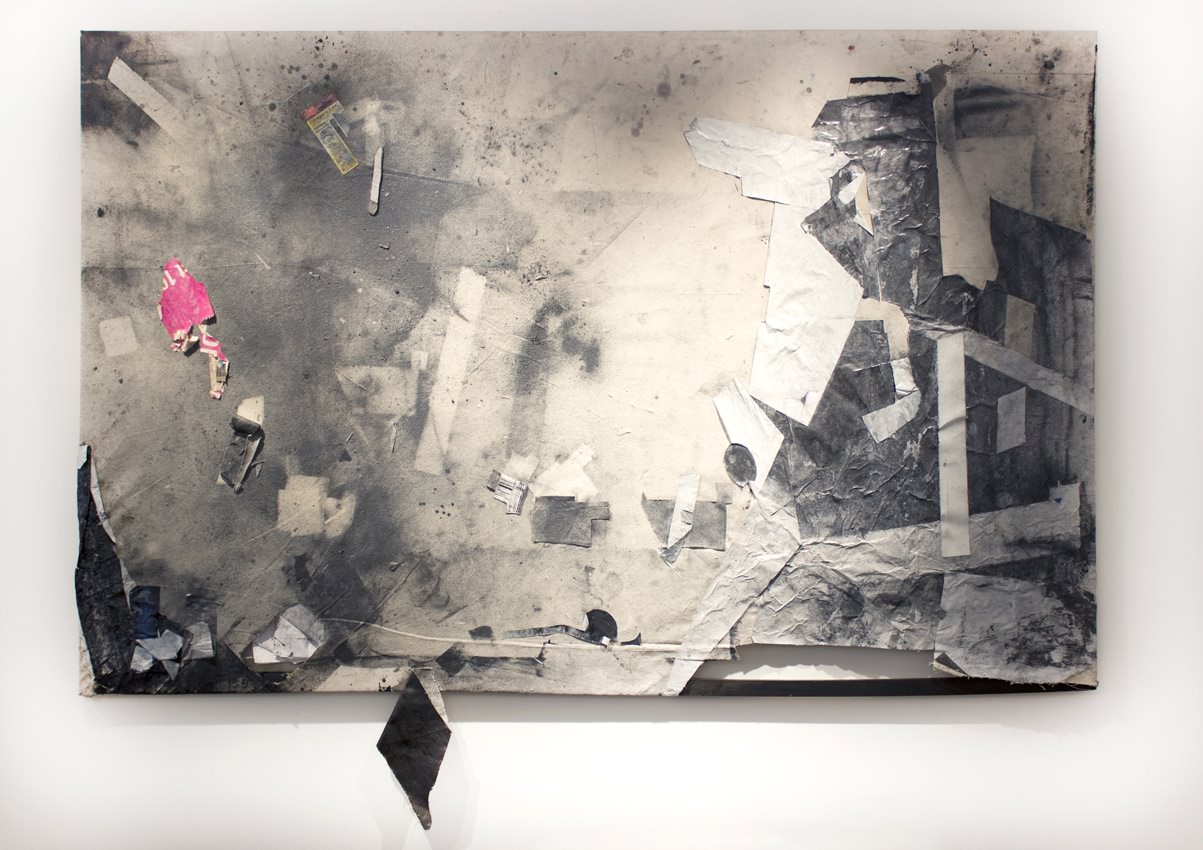
Cullen Washington Jr.
WW: How did you come up with the method of using a grid to create order for the chaos in your work?
CW: The grid found me. I tend to make work from a subconscious place. After making five to 10 works, something becomes salient. I step back and think about what is revealed. Over the last two years, it became apparent that I continued to have grids in my work. They happened by happenstance as I searched for a way to make larger paintings. The solution was to employ the idea of modulation. But as I resolved this problem, there was something else about the grid that resonated for me but was not yet verbalized. It dawned on me that this was a means to effectively communicate what I had been trying to convey. The grid is a metaphor. It is the invisible infinite lattice that holds all things together (omnipresence). It is the compositional device that allows me to hang whatever I choose from its arms. It is an aspect of the art historical language that says, “This is a painting.”
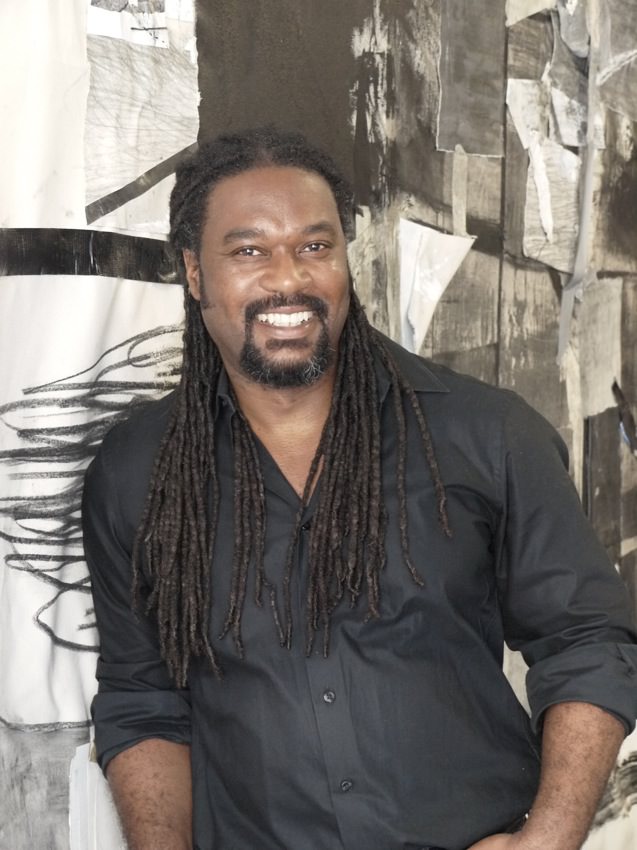
Space Notation 2
2014
WW: What is usually the stopping point for adding or subtracting materials to create or remove space in your work?
CW: I think that as an artist, I am a problem solver. To make a work, means to solve a visual problem in a dynamic or non-linear way. I tend to think of the painting as a whole and not as component parts. This idea of gestalt helps to guide me in knowing when to stop.
Since making the work is a continual process, ideas that weren’t totally explored in one piece can be done in the next and so on. I made conceptual art for a while in 2010. In doing so, it cultivated a different sensibility. In painting, it seems the whole story is told in one piece. In making conceptual art this isn’t necessarily the case. Each piece doesn’t have to tell the whole story or totally reach a challenging finish. There is more room for openness and missing parts. When I returned to making paintings, I retained this approach. So my work is best viewed as a series… as a continual whole.
WW: How do you think your repurposed materials aid in abstraction and insinuation?
CW: Great question! My Dad was an etymologist of sorts and loved words. He would always go to the root and origin to find its true meaning. He instilled that in me. Early on, I looked up the root of abstraction. It comes from the Latin abstractus, which means to take way or drag away. Abstraction also means to broaden the meaning of something beyond its specificity. For these reasons, I love abstraction. It gives me the ability to liberate things from their meaning and give them broader ones. For me, abstraction is the taking away of reality. The materials I use serve as the surface of life. They insinuate that the things held to be true are really ephemeral and peel away. The truth is what is unseen and what lies beneath in the mystery of the blackness. The materials I use also reflect a sense of economy in (con)temporary times. The use of the square insinuates a “bit” of information. The dirty way I use it conveys its temporal nature.
WW: How are you working in your studio? What do you start with?
CW: I usually start with Jimi Hendricks’ song, “Pali Gap” and move on to a little George Clinton, Santana, Eric Clapton, Theopolous London and Techno [laughs].
WW: What kind of impact does being from Louisiana have on your work in terms of order, chaos, truth, and media?
CW: The quilt. For me as a Southerner, it means so many things. It encompasses order, chaos, truth, and making something from nothing. Lately, I have started to look at the works as such, but in a modern way. My scraps are paper, ads, tape, string, wire, earphone cushions, and torn away squares which are representations of knowledge-bits and anonymous humanity.
WW: What do you think of today’s interconnectivity? How does this translate in your work?
CW: Are we really connected? American technology separates us with “I” everything, phone, pad, watch, etc. Are we connected to people or the thing itself? I think the things that separate us are conditions and labels. Class, race, gender, political party are all very apparent but I question if this is the true essence of humanity. My work is about what is anonymous and therefore the same in all people. If it has no name then it is unknowable and therefore has the potential to be anything. It’s the reason why there is very little to no representation in my work and why I titled past bodies of work “No-things” and “Untitled”. In the current body of work, the space in “Space Notation” coveys nothingness as well as infinite cosmic space. “____.” Fill in the blank with anything you want.
WW: When we met you at Titus Kaphar’s exhibition, a woman greeted you and said that if we knew you then we would know that your artwork was very “you.” Do you see your art as a reflection of yourself?
CW: “My belief is that it is most important for an artist to develop an approach and philosophy about life—if he has developed this philosophy, he does not put paint on canvas, he puts himself on canvas.” Jacob Lawrence said that. I echo him. I also believe that the work is interpreted through the eye of the beholder. That’s the beauty of abstraction.




